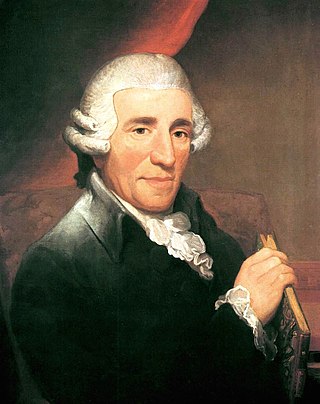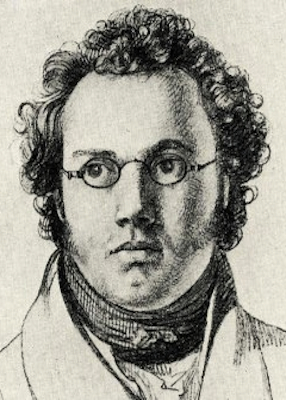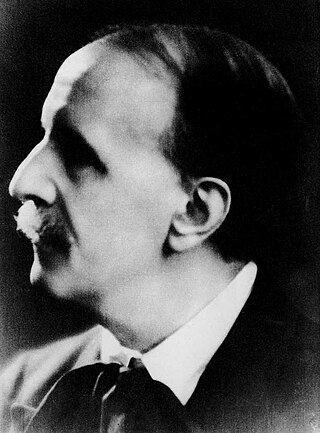
Sonata, in music, literally means a piece played as opposed to a cantata, a piece sung. The term evolved through the history of music, designating a variety of forms until the Classical era, when it took on increasing importance. Sonata is a vague term, with varying meanings depending on the context and time period. By the early 19th century, it came to represent a principle of composing large-scale works. It was applied to most instrumental genres and regarded—alongside the fugue—as one of two fundamental methods of organizing, interpreting and analyzing concert music. Though the musical style of sonatas has changed since the Classical era, most 20th- and 21st-century sonatas still maintain the same structure.

Paul Abraham Dukas was a French composer, critic, scholar and teacher. A studious man of retiring personality, he was intensely self-critical, having abandoned and destroyed many of his compositions. His best-known work is the orchestral piece The Sorcerer's Apprentice, the fame of which has eclipsed that of his other surviving works. Among these are the opera Ariane et Barbe-bleue, his Symphony in C and Piano Sonata in E-flat minor, the Variations, Interlude and Finale on a Theme by Rameau, and a ballet, La Péri.
Sonata form is a musical structure generally consisting of three main sections: an exposition, a development, and a recapitulation. It has been used widely since the middle of the 18th century.

The Symphony No. 4 in E minor, Op. 98 by Johannes Brahms is the last of his symphonies. Brahms began working on the piece in Mürzzuschlag, then in the Austro-Hungarian Empire, in 1884, just a year after completing his Symphony No. 3. Brahms conducted the Court Orchestra in Meiningen, Germany, for the work's premiere on 25 October 1885.
The Piano Quintet in F minor, Op. 34, by Johannes Brahms was completed during the summer of 1864 and published in 1865. It was dedicated to Her Royal Highness Princess Anna of Hesse. As with most piano quintets composed after Robert Schumann's Piano Quintet (1842), it is written for piano and string quartet.

The Symphony No. 1 in E minor, Op. 39, is a four-movement work for orchestra written from 1898 to 1899 by the Finnish composer Jean Sibelius.
The Symphony No. 6 in B minor, Op. 54 by Dmitri Shostakovich was written in 1939, and first performed in Leningrad on November 5, 1939 by the Leningrad Philharmonic Orchestra under Yevgeny Mravinsky.
Cyclic form is a technique of musical construction, involving multiple sections or movements, in which a theme, melody, or thematic material occurs in more than one movement as a unifying device. Sometimes a theme may occur at the beginning and end ; other times a theme occurs in a different guise in every part.

The Symphony No. 104 in D major is Joseph Haydn's final symphony. It is the last of the twelve London symphonies, and is known as the London Symphony. In Germany it is commonly known as the Salomon Symphony after Johann Peter Salomon, who arranged Haydn's two tours of London, even though it is one of three of the last twelve symphonies written for Viotti's Opera Concerts, rather than for Salomon.

Franz Schubert's Symphony No. 5 in B♭ major, D. 485, was written mainly in September 1816 and completed on 3 October 1816. It was finished six months after the completion of his previous symphony.
The Symphony in C major by German composer Robert Schumann was published in 1847 as his Symphony No. 2, Op. 61, although it was the third symphony he had completed, counting the B-flat major symphony published as No. 1 in 1841, and the original version of his D minor symphony of 1841. It is dedicated to Oscar I, king of Sweden and Norway.

The Symphony No. 100 in G major, Hoboken I/100, is the eighth of the twelve London symphonies written by Joseph Haydn and completed in 1793 or 1794. It is popularly known as the Military Symphony.

The Symphony in D minor is the best-known orchestral work and the only mature symphony written by the 19th-century composer César Franck. It employs a cyclic form, with important themes recurring in all three movements.

Symphony No. 34 in C major, K. 338, was written by Wolfgang Amadeus Mozart in 1780, and completed on 29 August that year.
Ernest Chausson's Symphony in B-flat major, Op. 20, his only symphony, was written in 1890 and is often considered his masterpiece.
Symphony No. 2 in E minor was written by Wilhelm Furtwängler between 1945 and 1946 in Switzerland. It is in four movements:
- Assai moderato - Allmählich belebend - Von hier ab festes Tempo (Allegro)
- Andante semplice (Tranquillo)
- Un poco moderato - Più Allegro - Più Moderato - Allegro - Moderato - Allegro
- Langsam - Moderato andante - Allegro molto - Moderato - Langsam - Moderato - Presto
The Symphonic Variations, M. 46, is a work for piano and orchestra written in 1885 by César Franck. It has been described as "one of Franck's tightest and most finished works", "a superb blending of piano and orchestra", and "a flawless work and as near perfection as a human composer can hope to get in a work of this nature". It is a fine example of Franck's use of cyclic unity, with one theme growing into various others. The piano and orchestra share equally in the development of ideas. The work is in F♯ minor. Duration in performance is about fifteen minutes, and the instrumentation is piano solo and orchestra: pairs of flutes, oboes, clarinets, and bassoons; four horns; two trumpets; timpani; and strings.
Francis Poulenc's Concerto pour deux pianos in D minor, FP 61, was composed over the period of three months in the summer of 1932. It is often described as the climax of Poulenc's early period. The composer wrote to the Belgian musicologist Paul Collaer: "You will see for yourself what an enormous step forward it is from my previous work and that I am really entering my great period." The concerto was commissioned by and dedicated to the Princess Edmond de Polignac, an American-born arts patron to whom many early-20th-century masterpieces are dedicated, including Stravinsky's Renard, Ravel's Pavane pour une infante défunte, Kurt Weill's Second Symphony, and Satie's Socrate. Her Paris salon was a gathering place for the musical avant-garde.

Symphony No. 2, Ascensão (Ascension) is a composition by the Brazilian composer Heitor Villa-Lobos, written between 1917 and 1944.

The Symphony en la mineur, op. 24 by Louis Vierne is the composer's second symphonic score, after Praxinoë op. 22, and is the only symphony for orchestra by the blind organist of Notre-Dame de Paris who composed six Organ Symphonies.











